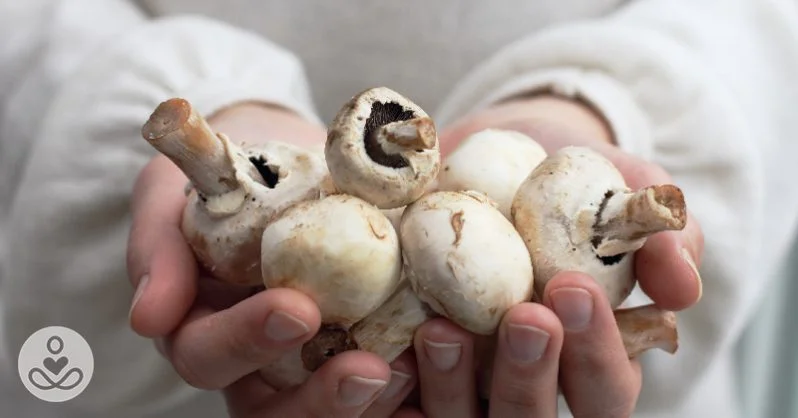14 Types of Mushrooms and their Uses
by JANET RAUSA FULLER ESTHER SUNG
From dependable crimini to meaty morels, mushrooms have a lot to offer.
With so many types of mushrooms, the possibilities (and recipes) are endless. High in fiber and vitamins, mushrooms are also fat- and cholesterol-free. They're popular around the world due to their versatility as well as their meat-like heft and texture — and these days, we generally don't have to travel further than the produce aisle to explore them all. Here, we take a look at the flavor profiles and characteristics of the most popular mushroom varieties.
1. WHITE BUTTON MUSHROOM
Alternate names: able mushroom, cultivated mushroom, button, champignon (de Paris)
Characteristics: The most common and mildest-tasting mushroom around. Ninety percent of the mushrooms we eat are this variety. Less intensely flavored than many of its more exotic kin, it can be eaten either raw or cooked and works well in soups and salads, and on pizzas.
2. CRIMINO MUSHROOM (CRIMINI, PL.)
Alternate names: Cremini, baby bellas, golden Italian mushrooms, Roman, classic brown, Italian brown, brown mushrooms
Characteristics: A crimino is a young portobello. Although the crimino is darker, firmer and more flavorful than its cousin the white button mushroom, the two can be used interchangeably. Increasingly, retailers hoping to capitalize on the popularity of the portabellos are selling crimini mushrooms as "baby bellas."
3. PORTABELLO MUSHROOM
Alternate Names: Portobella, field mushroom, open cap mushroom
Characteristics: Common in Italian cooking, dense, rich portobellos lend depth to sauces and pasta and make a great meat substitute. When portabellos are young and small, they're called criminis. If you want a bun-substitute, you can even use the mushroom's flat cap. Mushrooms of this variety are as wide as the palm of your hand, and their meaty texture stands up to grilling and stuffing (or both!).
4. SHIITAKE MUSHROOM
Alternate Names: Shitake, black forest, black winter, brown oak, Chinese black, black mushroom, oriental black, forest mushroom, golden oak, Donko.
Characteristics: In Japanese, shiitake means "oak fungus," which describes where the mushrooms can be found in the wild. These days, however, most shiitakes are cultivated. They're best identified by their umbrella-shaped brown caps, which curl under ever so slightly. Fresh shiitakes have a light woodsy flavor and aroma, while their dried counterparts are more intense.
5. MAITAKE MUSHROOM
Alternate Names: Hen of the Wood, sheepshead mushroom, ram's head, kumotake, dancing mushroom
Characteristics: From afar, this mushroom can look like ahead of cabbage. Cultivated, as well as found in the woods, these mushrooms are often sold in clusters with their soft, feathery caps overlapping. This mushroom has an earthy aroma and a gamy flavor and is native to both the northwestern United States and Japan. They grow wild east of the Mississippi River in August and September.
6. OYSTER MUSHROOM
Alternate Names: Tree oyster, angel's wings, pleurotte en huître, abalone mushroom, shimeji
Characteristics: Although these can be found in the wild growing on the sides of trees, the ones you'll find in the store or on a menu are most likely cultivated. Like their namesakes, they're whitish in color and fan-shaped and possess a delicate odor and flavor. Oyster mushrooms are found in many Japanese and Chinese dishes such as soups and stir-fries.
7. ENOKI MUSHROOM
Alternate Names: Enokitake, enokidake, futu, winter mushrooms, winter fungus
Characteristics:__ The edible variety of these mushrooms feature small, shiny white caps attached to thin stems and possess a distinctive crunch. They're good raw. In the wild, they grow on Chinese Hackberry trees, ash trees, mulberry trees, and persimmon trees.
8. BEECH MUSHROOM
Alternate Names: Buna shimeji, beech brown mushroom, clamshell mushroom
Characteristics: Cooked, these crunchy brown-capped clusters are crunchy with a sweet nuttiness. Raw, however, they taste bitter.
9. KING TRUMPET MUSHROOM
Alternate Names: King oyster, trumpet royale, ali'i oyster, boletus of the steppes, king brown mushroom, French horn mushroom, king brown mushroom
It’s all about the thick, meaty stem on this jumbo mushroom
10. BLACK TRUMPET MUSHROOM
Alternate Names: Horn of plenty, black chanterelle, the trumpet of the dead
This wavy fungi is a late-summer find in the Midwest and East and grows all winter in the West. Black trumpets have a rich, smoky flavor and notes of a black truffle mushroom when dried.
11. CHANTERELLE MUSHROOM
Alternate names: Golden, yellow, chanterelle, egg mushroom, girolle, pfifferling
Characteristics: Trumpet-like, with a depression in the center of its cap, the chanterelle is one of the most popular wild mushrooms. (Because they're notoriously difficult to cultivate, chanterelles usually forage in the wild.) Golden-hued, fleshy and firm, they're described as having an apricot-like scent. They're common in many European cuisines, including French and Austrian, and are also native to the United States. They are particularly abundant in the West and Pacific Northwest from September into the cold months.
12. HEDGEHOG MUSHROOM
Alternate Names: Sweet tooth, wood hedgehog
Characteristics: With a sweet smell and taste, it makes sense that this mushroom is also called the "sweet tooth" (unless the mushroom is older — then it can take on a bitter flavor). Crunchy, nutty and meaty, this mushroom tastes very similar to a chanterelle. This hardy mushroom grows in the winter on the West Coast.
13. MOREL MUSHROOM
Alternate Names: morchella
Characteristics: A fleeting springtime treat in the Midwest and West. You can’t mistake its conical, spongy look and woodsy flavor.
14. PORCINO MUSHROOM (PORCINI, PL.)
Alternate names: Cèpe, bolete, king bolete, borowik, Polish mushroom, Steinpilz, stensopp, penny bun
Characteristics: Slightly reddish-brown in color, porcini are one of the most prized wild mushrooms, sought out for their smooth texture and aromatic, woodsy flavor. They're popular in Italy, as well as in France, where they're called cèpes. Fresh porcinis aren't as easy to locate in the United States, but dried ones are easily reconstituted by soaking in hot water. Prized in Italy, these have a brief summer season in the East and pop up in the spring and fall on the West Coast.
First published:







